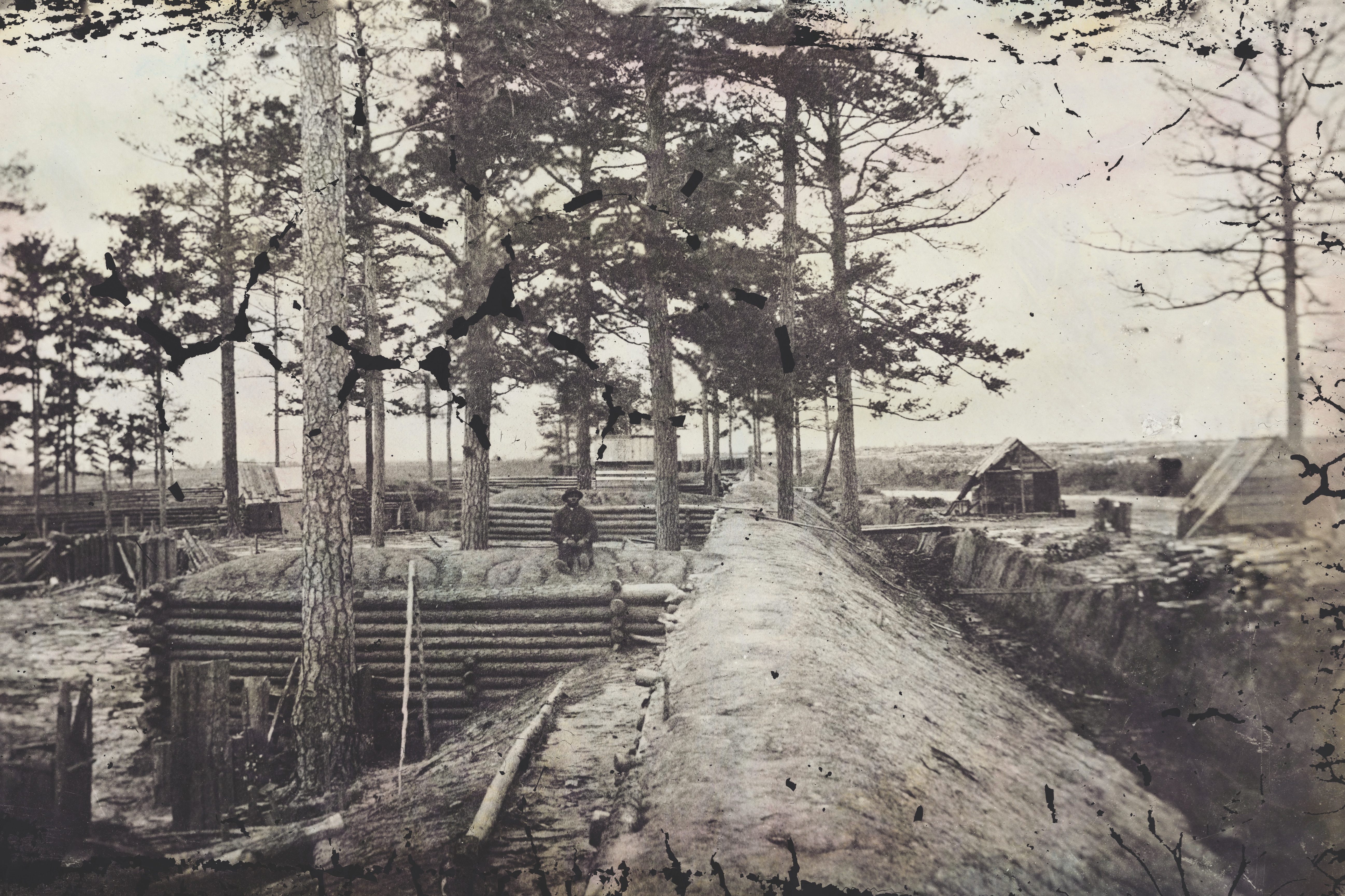Known in official reports as Redoubt H, it was a key part of the Union’s plan to push the Confederate army to the breaking point.
On July 6, 1864, a large contingent of Union soldiers, many hefting picks and shovels, marched to a point just west of Jerusalem Plank Road, a mile south of the Confederate earthworks protecting Petersburg, Virginia. Army engineers had been busy laying out what an observer described modestly as “a fortification of some strength.” Now the infantrymen took on a task as familiar to them as marching, camping, and rifle practice: They began to dig. Major General Gouverneur K. Warren, whose V Corps occupied the area, welcomed the chance to apply his considerable engineering skills to the project, happily proclaiming himself “general of trenches.” His near constant presence during the construction of the redoubt led to its informal, if brief, designation as Fort Warren. The fort’s namesake was already a certified hero for his role in defending Little Round Top at the Battle of Gettysburg almost exactly a year earlier.
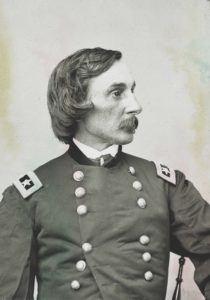
A native of Cold Spring, New York, Warren had graduated from the U.S. Military Academy in 1850 and served in the peacetime army on the Trans-Mississippi frontier before returning to West Point as a mathematics instructor. After mounting a regiment of New York volunteers at the beginning of the Civil War, he had risen steadily through the ranks of the Army of the Potomac. His quick action in occupying previously undefended Little Round Top on the second day of the battle at Gettysburg had saved the Union army from disastrous defeat and brought Warren a promotion to major general. After further distinguishing himself at the Battle of Bristoe Station in Virginia on October 14, 1863, he was appointed head of V Corps in the Army of the Potomac.
The squarish fort that Warren was helping to construct was large enough for a 550-man garrison—400 feet on three of its sides and a little more on the fourth, with parapets 10 feet thick and eight feet tall—and girded by a trench 20 feet wide and 10 feet deep. It was the only fort at Petersburg whose interior was bisected by a large diagonal parados traverse to shield munitions and troops from incoming enemy shells, and it had slots for eight cannons. It also contained two water wells, bombproofs (reinforced shelters), and three encircling lines of abatis (entangled tree branches sharpened on the enemy’s side). The fort was unusual in that it had been built from scratch rather than modified from an existing captured works.
“General Warren is now in his element,” Colonel Charles S. Wainwright, Warren’s artillery chief, wrote in his diary on July 14. “So far as I can learn, he is his own officer of the trenches, and commander of the working parties. There is nothing that he likes so much as overseeing work, and is consequently in a most agreeable humor. I spent some hours with him yesterday in the large redoubt, which one might easily believe he had undertaken to build by contract, and certainly has pushed forward with most wonderful rapidity.”
The construction of forts outside Petersburg was a critical element in the strategy of Lieutenant General Ulysses S. Grant, the overall Union commander, to defeat General Robert E. Lee’s Confederate forces. Having learned the hard way after nearly two months of intense fighting in the Wilderness region of Virginia that direct attacks against Lee could not succeed, Grant changed his approach. He moved to invest Petersburg, an important supply and communications center 24 miles due south of Richmond on the Appomattox River, where Lee had made a stand after the series of battles known as the Overland Campaign.
The new forts would be a major load-bearing component in a network of Union earthworks that would progressively extend Lee’s right flank as Grant sought to cut the railroads linking Petersburg to Richmond and the Lower South. As one of the largest works, in an important hinge position, Warren’s fort would play a key role in future operations. At least 29 regiments and seven batteries would serve at one time or another within its walls, and Union casualties there would eventually number in the hundreds.
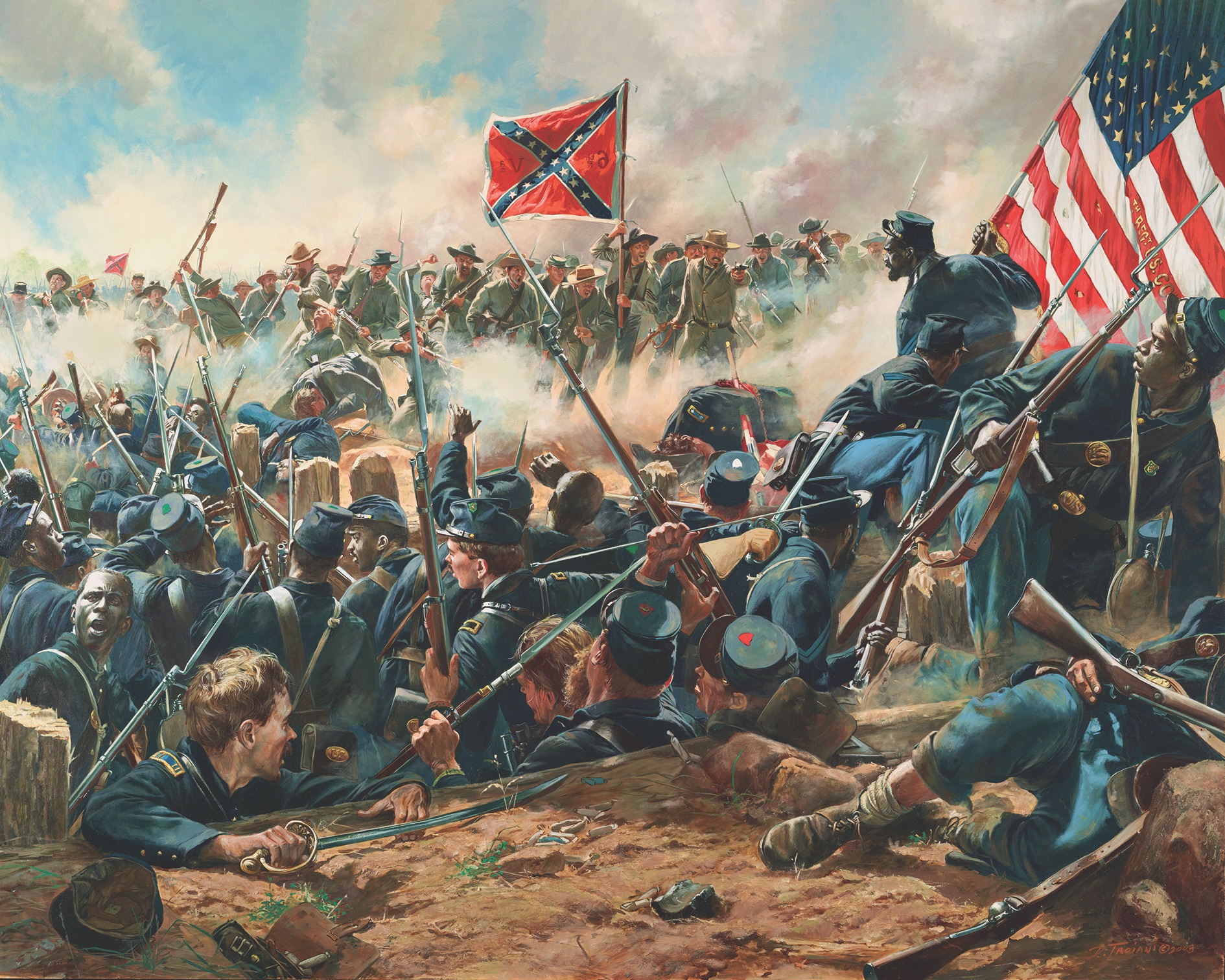
At first the construction parties were screened by piles of brush, but by mid-July the works themselves were sufficiently stout to provide cover for four infantry regiments and the guns of the 9th Massachusetts Battery. As the fort was being built, Warren’s men decided to leave a number of tall trees in place, ostensibly to provide shade. In a frontline bastion, however, nothing is entirely without military application, and before long the trees were doubling as signal stations and observation platforms. “The operators were driven out of it twice while we were there by shots from the picket lines,” an infantryman recalled of one of the trees. “They fortified the tree as well as possible, but even then it was too warm for them at times.”
All the activity along Jerusalem Plank Road drew enemy attention. On July 12, a Confederate cannonball, arching past the fort toward a distant supply train, deflected off the tree branches and skittered into the camp of the 39th Massachusetts, where it exploded near regimental commander Colonel Phineas Stearns Davis. Davis was killed in the explosion, and the fort was later renamed in his honor.
The first direct action involving Redoubt H, as the fort was called in official reports, occurred on July 30 and involved using Warren’s artillery to support a major attack on the enemy works two miles to the northeast. At 4:30 a.m., Union sappers exploded a huge mine beneath the Confederate fortifications at Petersburg. Several units from Major General Ambrose Burnside’s IX Corps rushed into the enormous crater left by the explosion, but they were quickly enfiladed and shot down by counterattacking Confederates under Brigadier General William Mahone. Warren’s gunners fired away for four hours to no avail. The Union forces—those who managed to make it out alive—withdrew in shambles. The Battle of the Crater, as it inevitably came to be known, was “the saddest affair I have witnessed in this war,” Grant would later write.
The failure of the assault at the Crater caused Grant to again rethink his plans for taking Petersburg. He was left with three options: find another weak spot in the enemy’s defenses to attack head on, rely on more traditional siege operations to exhaust the Rebels, or strike the enemy’s open flank to interrupt its supply lines. Grant’s least preferred option was the second, but he had many engineers on his staff who advocated it, so he went along with their choice, at least for the time being.
Although a flanking move mounted in late June had failed, Grant itched to try it again. What he lacked, however, was sufficient manpower to prosecute the operations. Lee’s decision to dispatch a strong infantry column under Lieutenant General Jubal Early into the Shenandoah Valley to threaten Washington, D.C., forced Grant to detach the VI Corps and divert the just arriving XIX Corps (from Louisiana) to counter the threat. If Grant was going to accomplish anything meaningful at Petersburg, he would have to do it with fewer men.
On August 3 the Army of the Potomac’s brain trust gathered to reimagine the tangle of trenches, batteries, and forts. By smoothing it out, they reasoned, fewer men would have to be stationed in the works, thus freeing up units for a mobile reserve. Artillery batteries could hold bastions such as Fort Davis, allowing Grant to pursue his flanking strategy with the infantry.
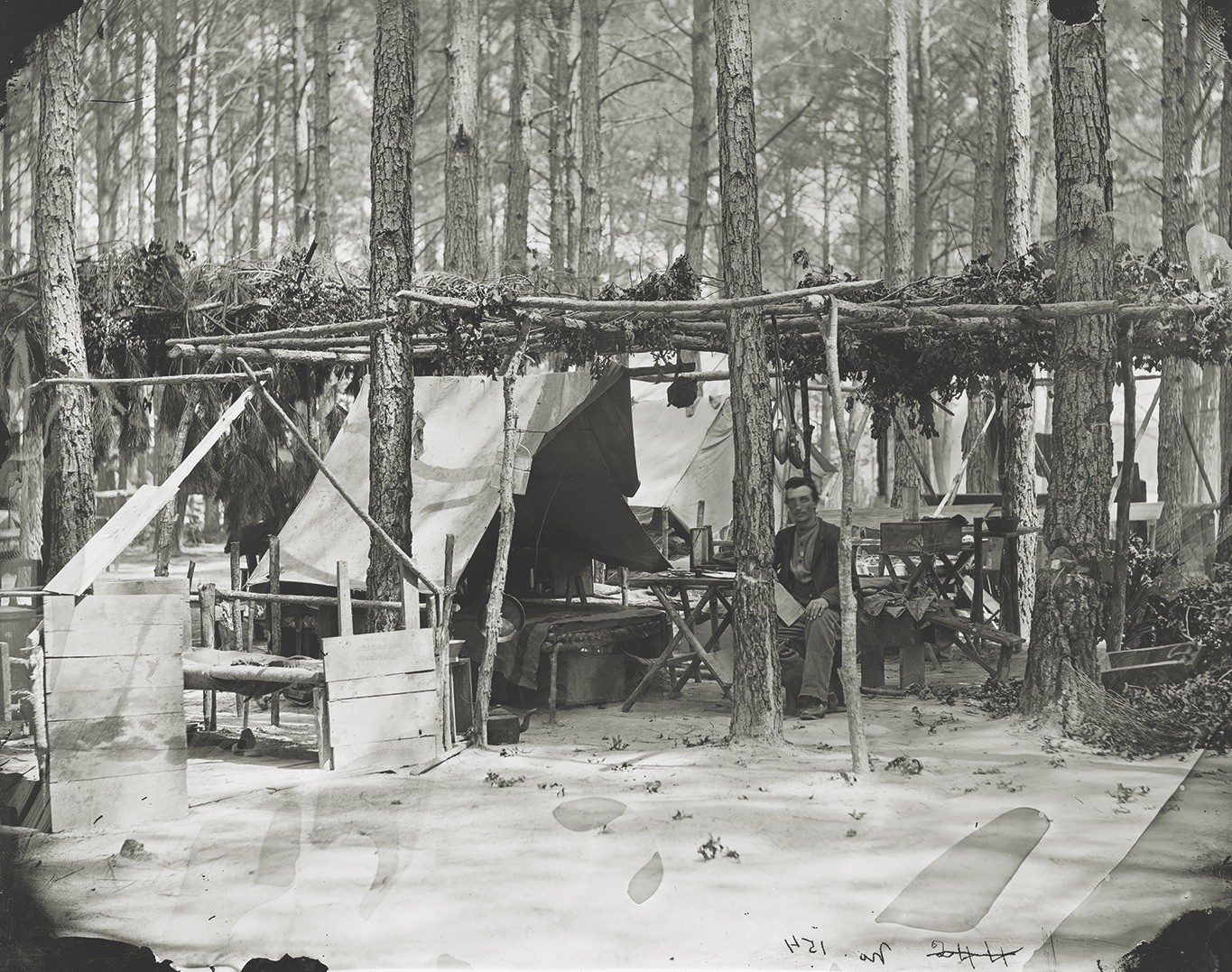
Grant, as usual, wasted no time. He aimed his initial blow westward at the Petersburg and Weldon Railroad, both to deny it to the Confederates and to punish any force that they might dispatch in response. He picked Warren’s V Corps for the job. The 9th Massachusetts Battery went along with the infantry, with the 1st New Jersey Light Battery B and the 6th Maine Light Artillery taking its place inside Fort Davis.
The ensuing Weldon Railroad fight raged from August 18 to 21 accompanied by a general artillery exchange along the entire line, including Redoubt H, where a sutler was killed on August 23. Two days later a pair of II Corps divisions wrecked the railroad tracks around Reams Station, five miles south of Warren’s position, before being driven back by eight Confederate brigades that Lee had dispatched from the Petersburg defenses.
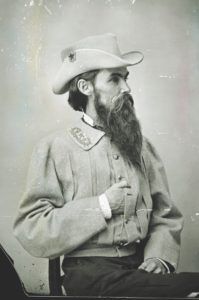
Grant’s next move against Lee’s right flank began on September 30, involving elements of V and IX Corps. Combat roiled at Peebles’s Farm for two days. An urgent call for reinforcements at the battlefront was passed to Major General Winfield Scott Hancock, whose II Corps was then minding the defensive zone that included Fort Davis. (Hancock, who had been a hero at the Battle of Gettysburg the previous year, had been nicknamed “Hancock the Superb” by his army colleagues.) A division was required, plus extra staff for a rear-facing line of forts and batteries to anticipate a possible enemy countermove. To cover all bases, Hancock had to undertake a major redistribution of his forces. The 3rd Division brigade occupying Fort Davis marched out and was replaced by a smaller force belonging to the 2nd Division. Enemy shells continued to fly overhead.
The summer’s torments included clouds of dust and swarms of insects, but the fall and winter were wet. Maintaining the forts and earthworks was a constant chore. Fort Davis itself had drainage issues; after a heavy rainstorm, two inches of water was left standing inside the works, requiring an extensive new system to channel the unwanted water into the moat. “I was never in a place where the weather was so fickle; to-day, cold and stormy, next day cold and windy, and the next warm and spring like,” lamented an artillery officer posted to Fort Davis in January. “We are now repairing the damage done to our works by the storm. I have a detail of fifty infantry at work besides our own men.”
October brought another of Grant’s flanking operations, involving three army corps and most of his available cavalry. This time the Union spearhead reached Boydton Plank Road and battled along the path of a small watercourse that gave the battle its name: Hatcher’s Run. Once more, the operation fell short of its ambitious goals, and once more the line of Federal earthworks expanded.
In late October there was more small-scale action. Two New York regiments bore the brunt of the fighting. Each had already seen hard times in the war. The 111th New York, an upstate unit that Major General Thomas “Stonewall” Jackson had captured at Harpers Ferry early in the Antietam campaign. The regiment was duly paroled and returned to service with the Army of the Potomac. It fought well at Gettysburg but had recently taken a beating at Reams Station, 10 miles south of Petersburg. The 69th New York had entered the war as a part of the hard-fighting Irish Brigade. The larger unit had been completely worn down. An influx of replacements drawn from reluctant draftees and bounty men had filled the ranks of the 69th but diluted its combative spirit, so much so that when the regiment initially assumed its share of picket duties at Fort Davis, 10 of the new arrivals promptly deserted.
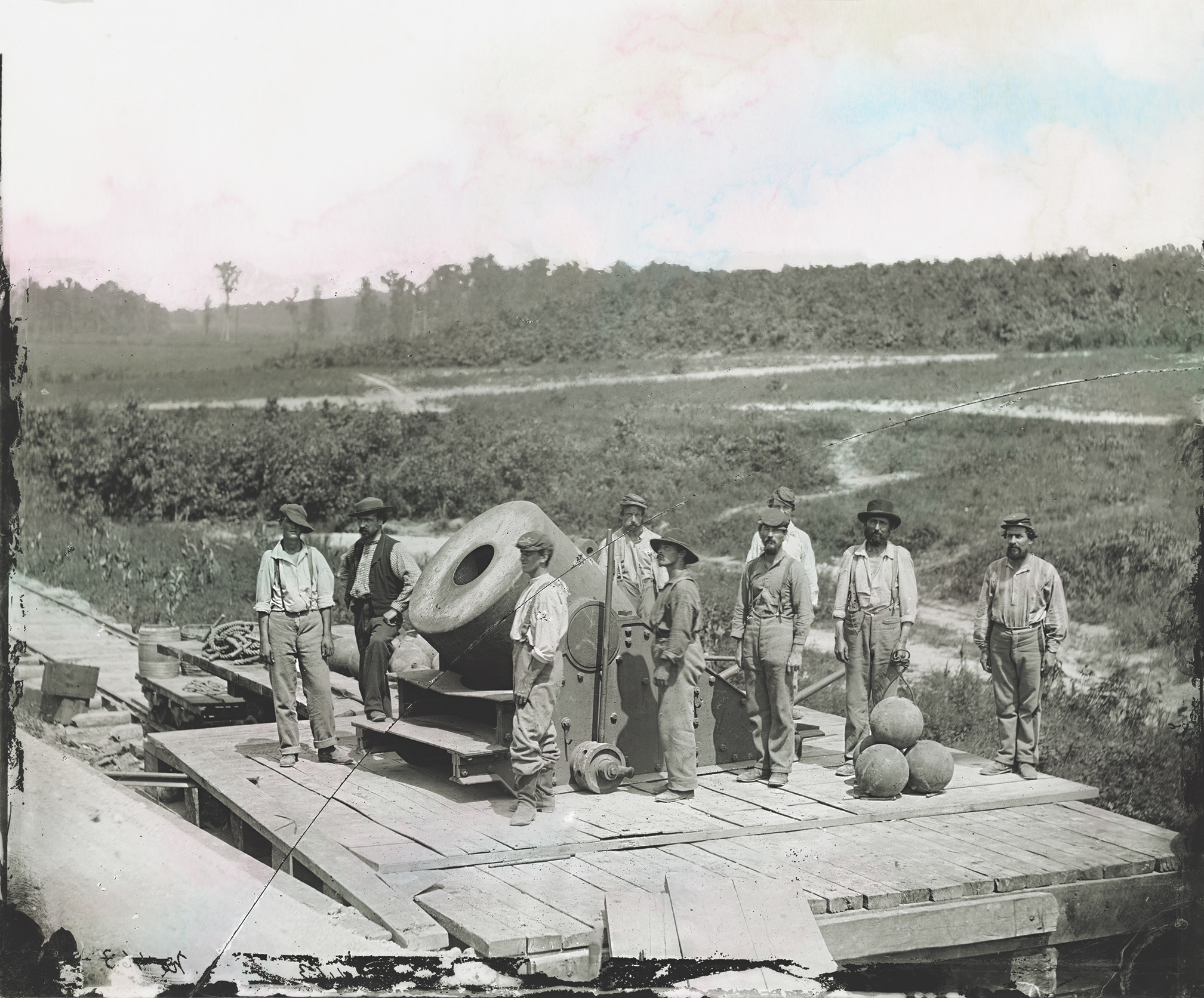
Two of the deserters proved especially garrulous, passing along to the enemy important details about the timetable by which pickets were rotated. The Confederate commander opposite Fort Davis, Brigadier General William Mahone, planned an ambitious operation for the night of October 30, targeting the New Yorkers. A detail of 150 to 200 men in two columns moved forward elbow to elbow through one of the gaps in the Federal picket line between the New York regiments. Once through the gap, the columns pivoted right and left, paralleling the picket line, to begin rolling it up. The Rebels termed this tactic “seine hauling”—they were the net, the Yankees the fish.
The New York pickets heard men approaching from the rear and thought it was their relief. Instead, 30 to 40 Confederate soldiers, armed with cocked rifles and fixed bayonets, assailed them and demanded their unconditional surrender. The attackers formed a hollow square to corral their prisoners and herded them off to nearby Confederate rifle pits before returning to repeat the process until they had gathered all the prisoners they could manage.
Along with the deserters, a Union command failure had facilitated the Confederate operation. A lieutenant in the 111th New York, Esek W. Hoff, one of the first to encounter the interlopers, managed to escape. Standing orders were to alert the next picket post of any attack, but instead Hoff raced off to warn the overall sector commander. By the time the alarm had been raised, the Confederates had carried off their prisoners—247 of them in all, including 164 from the 69th and 83 from the 111th.
November was the first month of the Petersburg campaign with no Union flanking actions, partly to allow soldiers time to vote in the presidential election that pitted President Abraham Lincoln against his Democratic challenger, former Union general George B. McClellan. The month began with four straight days of rain—a period a Fort Davis soldier declared “cold wet and disagreeable.” The rest of the month was punctuated by artillery exchanges; in one, a New Jersey battery fired 280 rounds at a barn on the Confederate side that had become a favorite perch for enemy sharpshooters. The barn, a Union gunner reported, was subsequently “reduced to splinters.”
December brought changes to Fort Davis and the overall campaign. Instead of mounting another flanking maneuver, Grant dispatched much of V Corps on a southward raid. The target, 40 miles distant, was a railroad bridge across the Meherrin River that represented a critical piece in Lee’s tenuous supply line. Warren was in charge, but weather issues and Rebel resistance caused him to turn around before he had completed his mission. Grant took note of his failure. Meanwhile, VI Corps returned from its Shenandoah Valley assignment to take over trenches and forts west of Fort Davis.
The infusion of new troops allowed Grant to reapportion his forces in preparation for additional flanking moves once the roads dried. As II Corps joined the movements, responsibility for Fort Davis passed to IX Corps, whose territory now extended north as far as the Appomattox River and west to another fortification, Fort Howard. “We are very fortunate in being out of range of the enemy’s guns,” a newly arrived officer of the 186th New York noted, “although a stray bullet from their pickets does now and then come whistling over our heads.” Occasional entertainment was provided by the 9th New Hampshire band, stationed near Fort Davis. The band also had the distasteful task of accompanying processions in which condemned Union soldiers were marched to a nearby execution site—a duty a musician recalled as “frequent.”
The newly constructed U.S. Military Railroad, which a reporter described as “one of the wonders and the triumphs of Yankee ingenuity and energy,” ran a mile east and south of Fort Davis. On calm days the sound of the passing trains carried to the Confederate lines. Hoping to interrupt the rail traffic, the Confederates brought up their most technologically advanced artillery piece: a breech-loading Whitworth cannon, made in England, that fired an elongated hexagonal shell—called a bolt—up to four miles. Two officers at Fort Davis, thinking themselves reasonably safe from the main Rebel lines, were standing atop the parapet when one of the bolts struck them. One officer lost his left arm, the other his right leg.
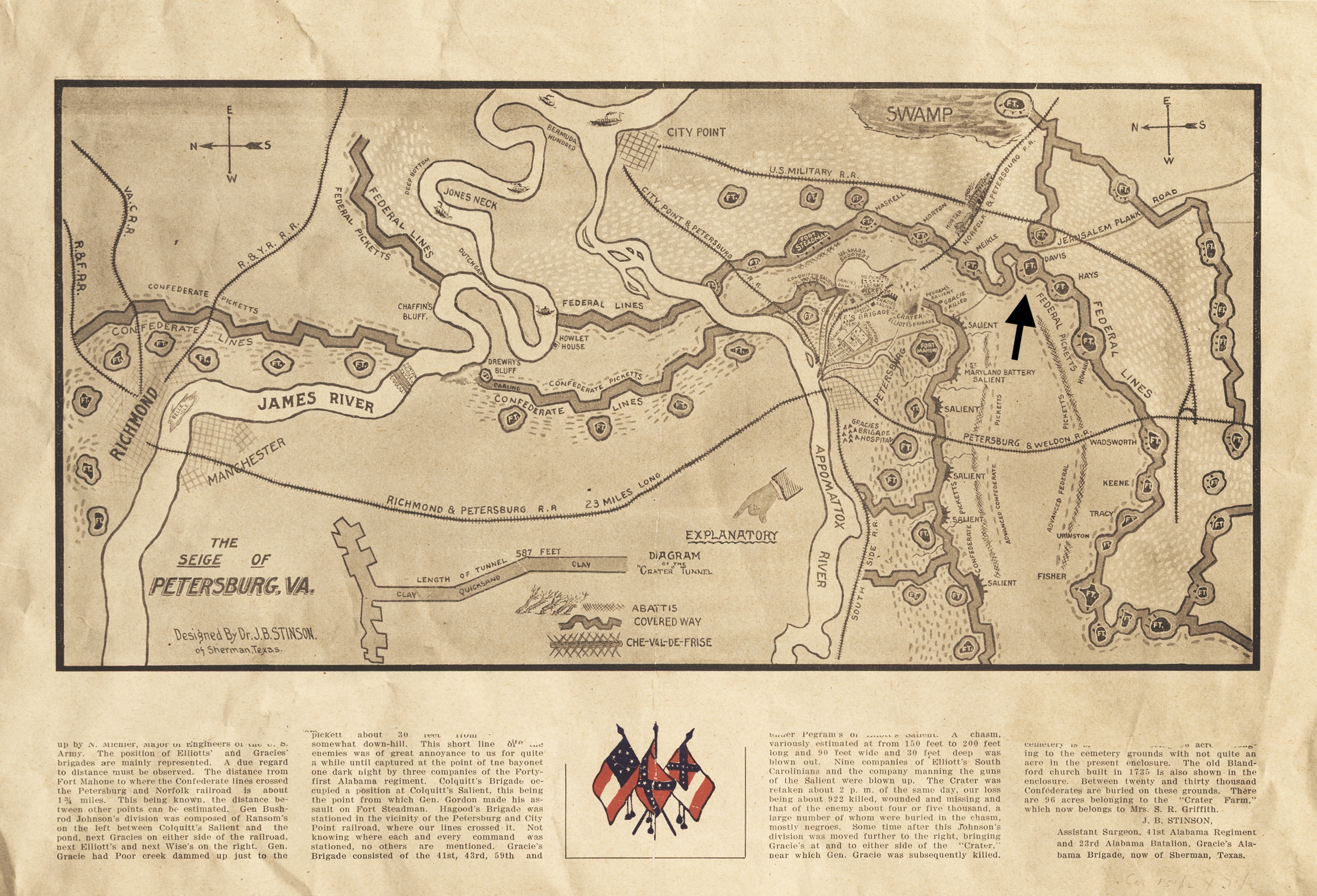
Grant’s penultimate flanking operation, which would culminate in the Second Battle of Hatcher’s Run, cranked into gear. As the month of March ran its course, large numbers of troops were on the move, conducting reviews, assembling supplies, and lining up for pay. All signs pointed to a serious renewal of combat.
Much to the surprise of all, it was the Confederates who initiated that renewal. On March 25, Lee’s forces launched a predawn attack on Forts Stedman and Haskell, three miles northeast of Fort Davis. The high-risk operation failed, and the overwhelming Federal response resulted in a crushing defeat. Meanwhile, to the west of Fort Davis, Union commanders aggressively probed the thinned-out Confederate positions and, at some points, wrested control of enemy picket lines. Inside Fort Davis, the men of Battery B, 1st Pennsylvania Light Artillery, were little more than bystanders, although gunners in nearby Battery 22 fired two dozen rounds of percussion shells in response to a few long-distance enemy shellings.
Grant’s final flanking move came in late March, spearheaded by Major General Phil Sheridan’s veteran cavalry, joined by Warren’s V Corps. After a no-decision engagement at Dinwiddie Courthouse on March 31, Sheridan scored a dramatic victory on April 1 at Five Forks, an important crossroads 10 miles southwest of Petersburg. Grant promptly ordered all his remaining forces to attack the next day, an effort to be preceded by a massive artillery bombardment.
Grant aimed to break through the enemy lines stretched across Jerusalem Plank Road. All guns would support the attack, beginning with a predawn barrage. Captain William McClelland, Battery B’s commander, hurried back to Fort Davis and called out, “Cannoneers, to your posts!” Once matters were organized to his satisfaction, McClelland rode off to see how Battery 22 was faring.
The bombardment continued for several hours. Around 6 a.m. an order arrived from the headquarters of Major General John G. Parke, the commander of IX Corps, for McClelland to send forward two gun detachments to operate captured enemy cannons. An officer and 13 men were designated for the duty; although Lieutenant Thomas C. Rice was in charge, McClelland chose to tag along.
On reaching the captured battery, Rice and McClelland found blue-coated soldiers holding the reverse face of the Rebel earthworks, inside of which were six abandoned guns. The enemy had been driven back, but not far away, and still had lines of sight on its lost cannons. In a quick huddle, Rice and McClelland assigned duties, and then the gunners tumbled over the earthworks in a series of jumps and rolls. The gunners manned the nearest pair of cannons, which proved to be brass 12-pounders. “We were not used to smooth bores, but soon mastered that trouble and began to serve up Confederate shells out of Confederate guns that a few hours before had been directed at us,” one of the Union artillerymen later recalled.
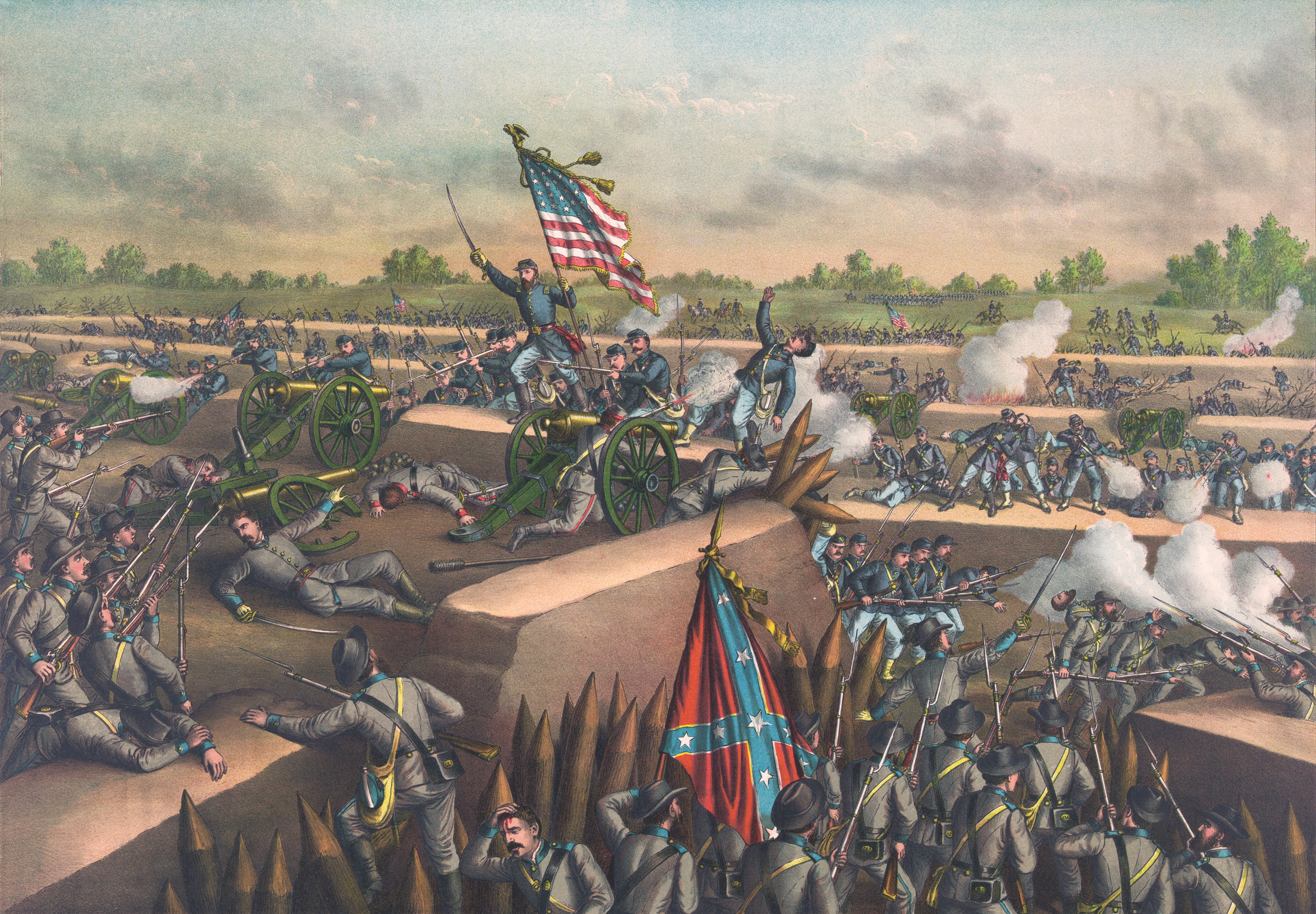
Enemy fire zipped all around them, but the Union cannoneers bent to their task. At one point they drove off a Confederate battery that had come forward to dislodge them, and at another they switched to shrapnel to help beat back a counterattack. Evening came and the firing subsided. The Fort Davis artillerymen had maintained their post at the cost of two dead and several wounded, including McClelland, who lost two fingers. The next morning revealed that the Confederates had quietly withdrawn all their forces from Petersburg.
By the time dawn arrived on April 3, the Union bastions along the Petersburg lines had ceased to be relevant. Troops were urgently needed elsewhere, some to pursue Lee’s retreating army, others to secure the city and its abandoned munitions. Batteries not engaged in the pursuit parked their weapons at City Point. The Fort Davis garrison was reduced to the minimum number of men needed to watch over the supplies cached there until they could be removed.
The fort’s final link to war came on April 3, when President Lincoln, on his way from Hancock Station to visit Grant in newly captured Petersburg, passed near Fort Davis as he traversed Jerusalem Plank Road. By then, the fort’s chief architect was long gone. At the Battle of Five Forks, Gouverneur Warren had run afoul of terrible-tempered Phil Sheridan for the last time. The two men had butted heads in the Virginia campaigns, with Warren publicly complaining on at least two occasions that “the damned cavalry” kept getting in his way. Sheridan and his mentor, Grant, considered Warren and other engineer-generals to be a bit timid in the crunch, as evidenced recently by Warren’s failure to seize the enemy railroad bridge over the Meherrin River. Years later, in his best-selling Personal Memoirs, Grant recalled that Warren had been “a man of fine intelligence, great earnestness [and] quick perception” and that “he could see every danger before it occurred.”
At Five Forks, Warren had been slow to arrive on the field, having lost precious hours looking for a missing regiment. Grant had given Sheridan full authority to relieve Warren if and when the time came, and now Sheridan took the initiative. “By God, sir, tell General Warren he was not in that fight!” Sheridan raged to a messenger reporting Warren’s approach. When Warren finally arrived on the scene, Sheridan unceremoniously relieved him of duty. It was an ignominious end for the hero of Little Round Top and the builder of Fort Davis.
A decade and a half later, a court of inquiry initiated by President Rutherford B. Hayes, Warren’s friend and former comrade in arms, exonerated Warren of blame at Five Forks and ruled Sheridan’s hasty action unjustified. By then it was too late for Warren, who died before the panel’s findings were made public. At his request, Warren was buried in civilian clothes, without any military honors. According to one biographer, his last words were, “The flag, the flag.” MHQ
Noah Andre Trudeau is the author of nine books, including, most recently, Lincoln’s Greatest Journey: Sixteen Days That Changed a Presidency, March 24–April 8, 1865 (Savas Beatie, 2016).
[hr]
This article appears in the Summer 2020 issue (Vol. 32, No. 4) of MHQ—The Quarterly Journal of Military History with the headline: Fort and Fortitude

Want to have the lavishly illustrated, premium-quality print edition of MHQ delivered directly to you four times a year? Subscribe now at special savings!

